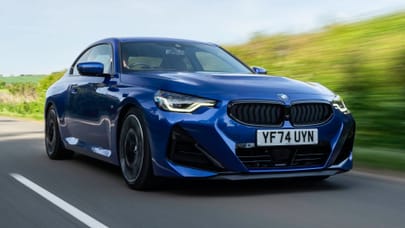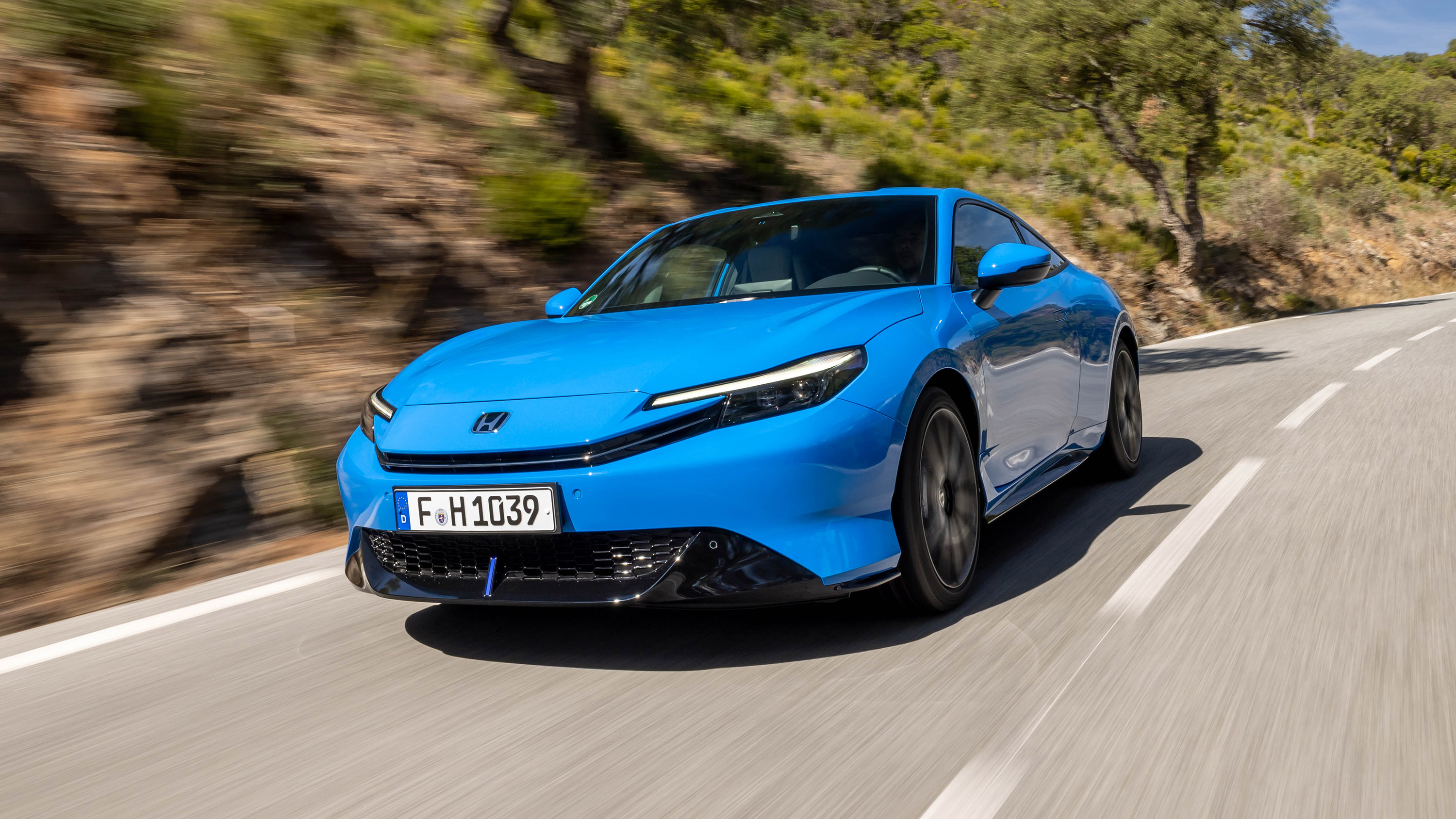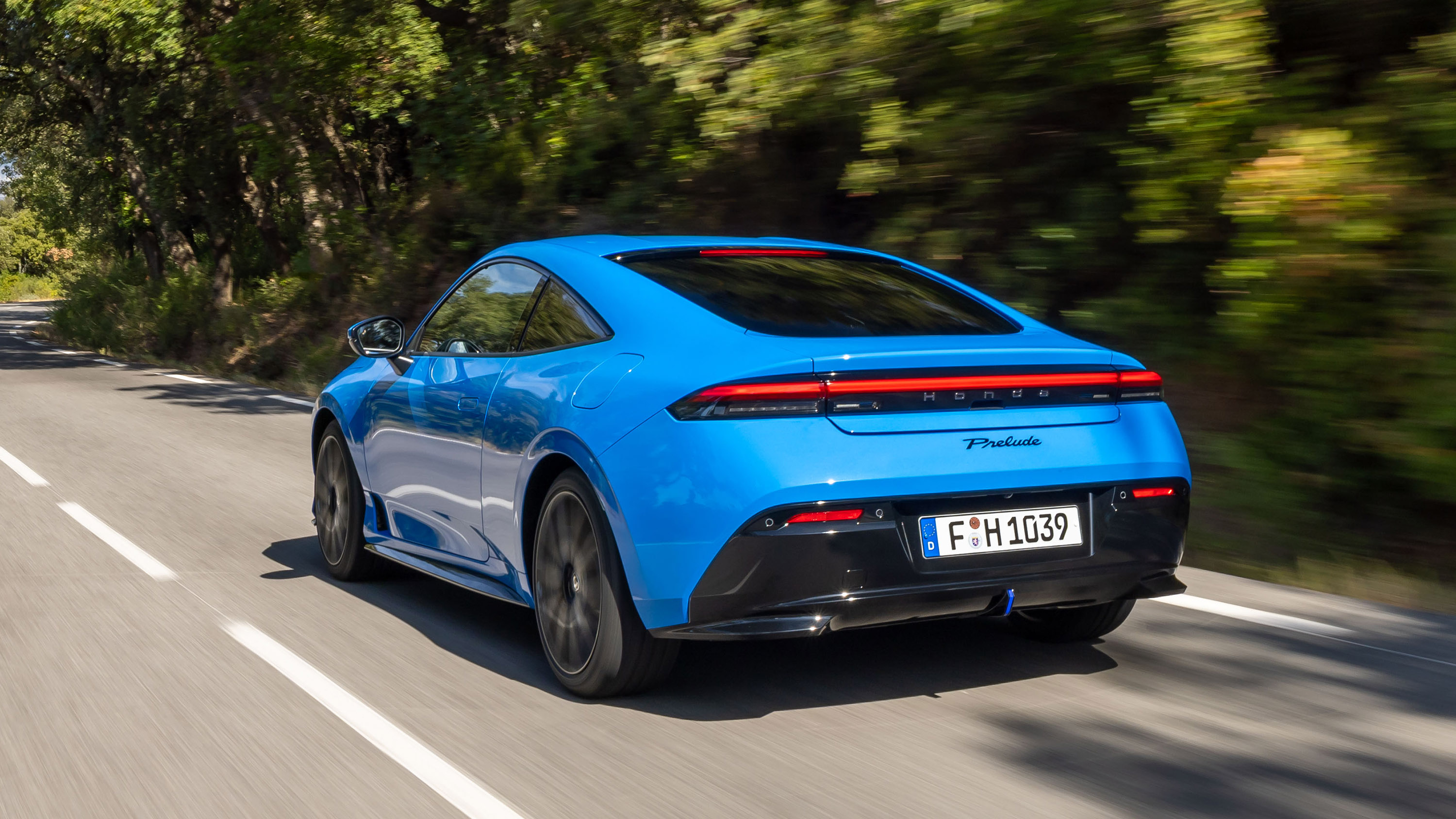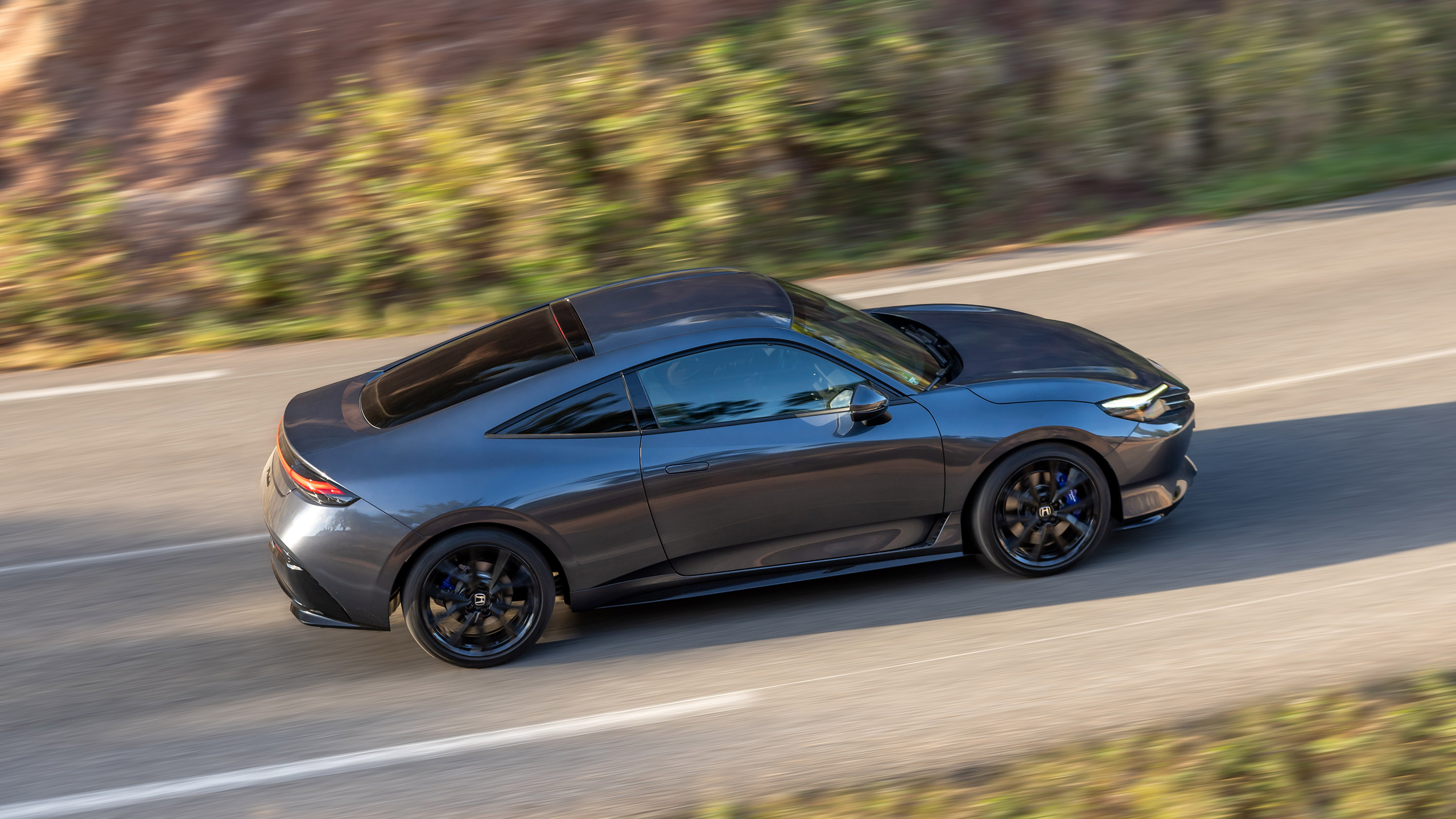
Good stuff
Subtly cool looks, smart chassis, Honda’s chutzpah making it
Bad stuff
Undeniably niche, we can’t help but crave more power
Overview
What is it?
The perfect date car, apparently. The previous five generations of Honda Prelude, the most recent of which retired back in 2001, frequently topped Japanese polls as the ideal transport to shuttle prospective life partners around in. Their sophisticated mix of a comfy interior and svelte profile feels light years away from the body-kitted Saxos that were thrown to similar use – quite literally around the local Tesco car park – in Nineties Britain.
It's easy to assume this one, hybridised and sensible as it seems, treads a different path to Preludes of old. But much like the Toyota Supra - which performed a similarly unlikely comeback in recent years - those older-gen cars perhaps weren’t the hyper-focused performance machines the sepia-hued specs suggest. Hence the refined, efficient and utterly liveable powertrain at the core of Prelude gen6 feels right on the money. Not least if some whisper-quiet road manners allow that infamously sparkling first date conversion to flow.
You wish. What powers it?
The same 2.0-litre four-cylinder petrol/e-motor mix as the current Honda Civic eHEV, which means modest outputs of 181bhp and 232lb ft for 0-62mph in 8.2 seconds. It’s a system that’s at once complex and simple; the engine typically only drives the front wheels directly at motorway cruising speeds, its power more typically channelled through the motor, a process which allows it to run at more efficient revs for greater fuel economy.
Far too studious for a sporty two-door, of course, and Honda knows as much with its introduction of S+ Shift. Rather like the Hyundai Ioniq 5 N, it offers a set of eight, faux gear ratios that you can flick-flack through via paddleshifters. They’re matched against a synthesised soundtrack – though at least there’s a real engine here to guide it, and a genuine 6,000rpm limit – with S+ creating the physical jolts of up- and downshifts and applying heel ‘n’ toe rev-matching to the latter.
Honda says S+ can be felt through ‘all five senses’, though failed to explain how you’ll taste or smell its choreographed gearchanges…
Let’s not ask. What about handling?
It gains the same adaptive dampers as a Civic Type R, albeit more biased towards ride comfort, as well as its dual-axis struts which help separate steering and power delivery at the front wheels and thus avoid torque steer. Essential in a 325bhp Civic, arguably less so here, but the end result is a car that feels fabulously over-engineered in the best Japanese tradition.
There’s also 'AHA'. Avoid the Alan Partridge impersonation if you can; AHA stands for Agile Handling Assist, a system which subtly nips at the inside wheels’ brakes as you enter a corner to help the car more faithfully follow your steering input, controlling the discs individually to further aid precision. Probably don’t mention this if you want your first date to sign up for a second.
Hybrid Honda coupes: haven’t we been here before?
The Honda CR-Z launched in 2010 as one of the few manual hybrids ever put into production (ignoring the mild-hybrids we have today). It was a neat-looking thing and affordable, too, remaining so to this day – as little as three grand gets you into one and we’re tempted.
Its performance was tame and its life short, however, and it’s taken a decade for Honda to slot a coupe back into its global range. This simply isn’t an important market post-SUV, and the Prelude’s tame annual UK sales will likely place it far higher up the coupe sales charts than you dare imagine.
Its most like-for-like rival is the BMW 2 Series, which shifts over 3,000 units each year. There’s also the Ford Mustang and whatever coupe may (hopefully) be spun from Audi’s Concept C. Beyond that you’re more likely looking at soft-tops or used examples of a Supra or Alpine A110 for potential rivals. Slim pickings, so kudos must be given to this car’s mere existence.
An Alpine, really?
Well, the A110 is name-checked by the engineers as one of the cars they benchmarked, specifically for its lightweight mentality. The 1,480kg Prelude can’t touch the wee Frenchie for agility, but Honda’s focus on keeping the car comfortably lighter than a BMW 220i (a car with identical peak power) involve purely manual controls for your seat adjustment and luxuries like a sunroof or powered tailgate being blacklisted from its configurator.
Which surely keeps the cost down, too. The UK product team worked hard to make sure the new Prelude didn’t drop jaws quite like the £50k+ Type R, and we reckon a £40,995 starting point is far more competitive than it could have been, not least when its Civic eHEV engine donor begins comfortably in the mid-30s and looks much less interesting.
Initial demand has been sky-high in its native Japan, in fact, far outstripping supply. Clearly romance ain’t dead – even with an electrified powertrain.
What's the verdict?
The Prelude relaunches as perhaps one of the most niche vehicles on sale. A small, affordable two-door coupe when barely anyone makes them, and a performance-minded car with a hybrid powertrain that barely lets the engine drive the wheels itself.
Pore too much over its curious tech spec and you might tie yourself in knots – so instead simply embrace a wilfully different car that’s meticulously engineered, interesting to look at and precise to drive.
Yeah, it could be more exciting, and sure, we’re hoping Honda has the budget and inclination to crank up its focus in the years that follow. For now, the handful of Brits who buy one each year will acquire something that’s as odd as it is beguiling.









